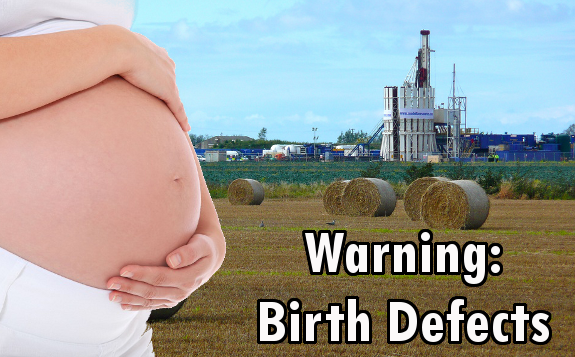Proximity to Natural Gas Wells Ups Risk for Birth Defects, Says Study

 (NaturalSociety) A new study from the Colorado School of Public Health raises concerns about where women live during pregnancy. Researchers looked at birth defects among some 125,000 live births and found that the closer women live to natural gas wells, the higher their risk of delivering a baby with birth defects.
(NaturalSociety) A new study from the Colorado School of Public Health raises concerns about where women live during pregnancy. Researchers looked at birth defects among some 125,000 live births and found that the closer women live to natural gas wells, the higher their risk of delivering a baby with birth defects.
Expectant mothers living in the highest density of wells, some 125 per square mile, was associated with a risk of neural tube defects twice that of other mothers who resided in areas where there were no natural gas wells within 10 miles. Further, babies born to the mothers in the highest concentrated areas were at a 38 percent increased risk of congenital heart defects.
The study found these increased risks in two specific types of birth defects—neural tube defects and congenital heart defects—both of which are relative rare. As Environmental Health News reports, though relatively rare, they both can cause serious health problems.
The study abstract concludes:
“Conclusions: In this large cohort, we observed an association between density and proximity of natural gas wells within a 10-mile radius of maternal residence and prevalence of CHDs and possibly NTDs. Greater specificity in exposure estimates are needed to further explore these associations.”
Neural tube defects include permanent defects of the brain or spinal cord which happen early-on in pregnancy. Congenital heart defects can disrupt normal blood flow and affect the valves, walls, arteries and veins.
The researchers noted there was no association between the rate of gas wells and oral cleft defects, low birth weight, and premature delivery.
Read: Monsanto’s RoundUp Shown to Cause Birth Defects
“Taken together, our results and current trends in natural gas development underscore the importance of conducting more comprehensive and rigorous research on the potential health effects of natural gas development.”
The research is particularly important in areas like Colorado, where it’s estimated about 26 percent of the nearly 50,000 oil and gas wells are located within less than 1,000 feet of residential homes.
There is a chance that socioeconomics and pre-existing health care status played a role, but the researchers didn’t have access to this data during their investigation. Because of this (and no-doubt the money that the industry brings into their state), state officials are cautioning people from taking the findings to heart.
“I would tell pregnant women and mothers who live, or who at-the-time-of-their-pregnancy lived, in proximity to a gas well not to rely on this study as an explanation of why one of their children might have had a birth defect,” said Larry Wolk of the Colorado Department of Public Health and Environment in a prepared statement. “Many factors known to contribute to birth defects were ignored in this study.”
